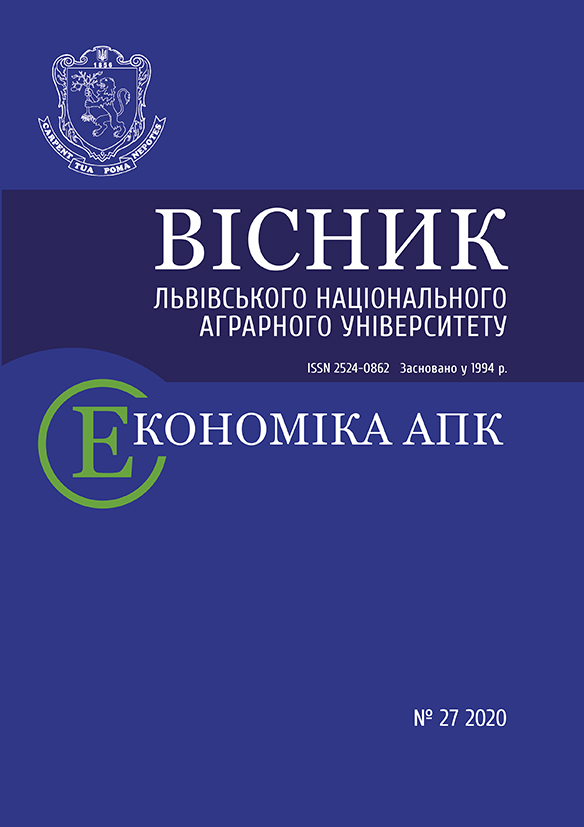Visnyk LNAU: Architecture and Farm Building 2021 №22: 47-54
REVIEW OF THE STUDIES OF ANCHORING OF THE REINFORCING BARS IN REINFORCED CONCRETE
R. Mazurak, PhD student
ORCID ID: 0000-0001-8369-6258
Lviv National Agrarian University
https://doi.org/10.31734/architecture2021.22.047
Annotation
It is shown that anchoring of the rod reinforcement of the periodic profile is provided by its adhesion to the concrete. The factors influencing the adhesion process are also taken into account.
The adhesion between the reinforcing bars and the concrete is an important factor that ensures the operation of reinforced concrete structures. The forces in the area of contact of the rods with the concrete are due to adhesion, friction on the contact surface and wedging, directed normally to the transverse ribs of the rods. The wedging force, which occurs due to the pressure of the transverse ribs of the concrete reinforcement, causes conical and radial microcracks. The process of crack development is hindered by the surrounding concrete, which can be reinforced with fiber reinforcement, which leads to jamming of the rods and the growth of both radial forces and maximum forces when pulling the rods from the concrete.
The research considers the most common methods foe estimation of the strength of adhesion of the reinforcing bars in concrete by testing the extraction of bars from prismatic samples and from the stretched zone of beams.
The proposed bibliographic review allowed studying the literature sources that covered the anchoring of reinforcement in concrete and focusing future research on the study of adhesion to concrete rods of small diameters and expanding the range of lengths of rods in the concrete to expand the parameter impact on communication behavior.
The analysis of theoretical and experimental studies of many authors proves that anchoring of the reinforcing bars is influenced by the class of matrix concrete, diameter of rod reinforcement, percentage of fiber reinforcement, shape and length of fiber, ratio of fiber length to its diameter, ratio of steel layer diameter to profile.
Parameters that can affect the magnitude of stresses during the extraction of reinforced concrete reinforcing bars, including prestressed elements, are predicted.
Key words
class of concrete, fiber, reinforcement, diameter of rods, coupling, tangential stresses
Link
- Bandelt M. J., Billington S. L. Bond behavior of steel reinforcement in high-performance fiber-reinforced cementitious composite flexural members. Materials and Structures. 2016. Vol. 49. P. 71–86.
- Chao S.-H., Naaman A. E., Parra-Montesinos G. J. Bond Behavior of Reinforcing Bars in Tensile Strain-Hardening Fiber-Reinforced Cement Composites. ACI Structural Journal. 2009. V. 106. No. 6. P. 897–906.
- Chu S. H., Kwan A. K. H. A new bond model for reinforcing bars in steel fibre reinforced concrete. Cement and Concrete Composites. 2019. Vol. 104. 12 p.
- E. Garcia-Taengua, J. R. Marti-Vargas, P. Serna. Bond of reinforcing bars to steel fiber reinforced concrete. Construction and Building Materials, 2016. Vol. 105. P. 275–284.
- E. Garcia-Taengua, J. R. Marti-Vargas, P. Serna-Ros. Statistical approach to effect of factors involved in bond performance of steel fiber-reinforced concrete. ACI Structural Journal. 2011. Vol. 108 (4). P. 461–468.
- E. Garcia-Taengua, J. R. Marti-Vargas, P. Serna. Splitting of concrete cover in steel fiber reinforced concrete: Semi-empirical modeling and minimum confinement requirements. Construction and Building Materials. 2014. Vol. 66. P. 743–751.
- Fernandes D. S. G., de Azevedo R. C., Carvalh E. P., Mirand M. P. A Review on the Study of Bond Behavior between Reinforcement Thin Bars and Concrete. International Journal of Science and Engineering Investigations. 2017. Vol. 6 (70). P. 125–130.
- Harajli M. H., Hamad B., Karam K. Bond-slip Response of Reinforcing Bars Embedded in Plain and Fiber Concrete. Journal of Materials in Civil Engineering. 2002. Vol. 14. P. 503–511.
- Harajli M. H. Effect of confinement using steel, FRC, or FRP on the bond stress-slip response of steel bars under cyclic loading. Materials and Structures, 2006. Vol. 39. P. 621–634.
- Harajli M. H. Bond Stress–Slip Model for Steel Bars in Unconfined or Steel, FRC, or FRP Confined Concrete under Cyclic Loading. Journal of Structural Engineering. 2009. Vol. 135. P. 509–518.
- Holschemacher K., Weiße D. Bond of Reinforcement in Fibre Reinforced Concrete. Proceedings of the 6th RILEM Symposium on Fibre-Reinforced Concretes 20–22 September 2004. Varenna, Italy: RILEM Publications SARL. P. 349–358.
- Rehm G. The basic principles of the bond between steel and concrete: Translation No. 134. Cement and concrete association. London, 1968. 66 p.
- TC R. RC 6 Bond test for reinforcement steel. 2. Pull-out test, 1983. RILEM Recommendations for the Testing and Use of Constructions Materials. New York, USA: E & FN SPON, 1994. P. 218–220.
- TC R. RC 5 Bond test for reinforcement steel. 1. Beam test, 1982. RILEM Recommendations for the Testing and Use of Constructions Materials. New York, USA: E & FN SPON, 1978. P. 213–217.
- Zhang X., Zhang W., Cao C., Xu F., Yang C. Positive effects of aligned steel fiber on bond behavior between steel rebar and concrete. Cement and Concrete Composites. 2020. Vol. 114. 11 p.



